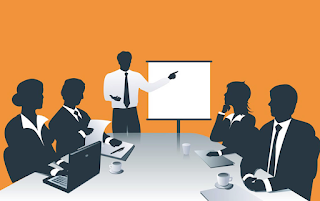The reason why most presentations suck is because we spend time creating slides rather than crafting a story. In fact, creating slides should be the last bit of the presentation process. Remember, slides are incredibly powerful when they amplify your message — but when they don’t, they are incredibly useless. In fact, they work against your message.
Audiences would be better off if most slides were eliminated. Have you ever thought about presenting with no slides at all? Who said we need slides?
1. Use a message map
A message map is a simple tool that helps you structure your story. Here’s how it works. Write down the single message you want your audience to take away. Then, find three main supporting points. Your presentation will be based on those. Here’s a short video of communication coach Carmine Gallo showing how a business can use a message map to tell its story. According to Gallo, “it is one of the most powerful tools in communication. It works each and every time”.
2. Plan analog
Close your laptop, get away from it and craft your story with pen and paper. I’ve learnt this from Garr Reynolds and I can tell you it’s the most valuable presentation-related piece of advice I’ve ever received. You’ll be much more creative by planning your presentation in an analog way.
You can translate your message map into slides, but (1) on a piece of paper first, and (2) only if they help amplify your message. If not, do not use them.
3. Open PowerPoint (if you can't resist)
Only once you’ve planned your presentation “analogically” should you open PowerPoint. If you’ve decided that slides might help you get your message across, then design visuals that complement your story. But you don’t have to. In fact, when in doubt, don’t!
The slide I showed you above is good for (almost) nothing. But it is good for showing that if we only focus on PowerPoint, we run the risk of becoming the tools of our tools. Next time you are asked to make a presentation, forget PowerPoint, get away from your laptop and think of your presentation as a story, not as a series of slides. [Tweet this]
IMAGE: Business Television



Greeat post thanks
ReplyDeleteAt TranceForMission, our Book Appointment Now helps you express yourself with clarity and confidence. Whether it’s improving workplace interactions or personal conversations, our expert coaching will refine your communication skills. Learn how to listen better, articulate your thoughts, and build meaningful connections. Elevate your ability to communicate and watch your relationships and career flourish.
ReplyDelete